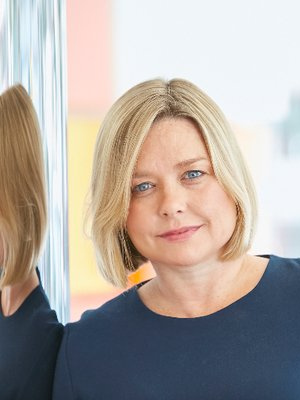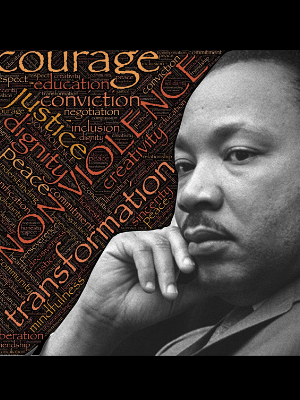 “As a leader, teams take their cues from you. Everybody has different styles, but people have to feel some sort of essence from you,” says Rachael Sansom. “And in the agency business, that’s also true in terms of the client relationship.”
“As a leader, teams take their cues from you. Everybody has different styles, but people have to feel some sort of essence from you,” says Rachael Sansom. “And in the agency business, that’s also true in terms of the client relationship.”
Sansom speaks to creativity, why Gen Z inspires her, the value of your essential energies and reconnecting to gut instinct.
Motivated By Creativity
With an intrapraneurial mindset, Sansom stepped in to manage the public relations (PR) agency Red Havas in London, when it opened as part of the global network.
“I’m in the game for the love of the people,” says Sansom, who feels working from home has underlined how much this means to her. “Agencies are creative working environments. I’m incredibly privileged to be working with really talented and fabulous people, with strong points of view.”
While managing business and growth, creativity is the core of her personal motivation. The most satisfying part of her work is participating in team brainstorming sessions to ponder creative solutions to difficult business questions: “Creativity can come from anywhere and it can mean different things. It can be creating a campaign. You can be creative in how you manage a client or how you create opportunities for people.”
Sansom notes that the multiple industry award-winning NHS Blood and Transfusion Service’s ‘Missing Type’ campaign, – in which 1,000 organizations removed the A, O and B from their signage and social media branding to bring attention to the ‘missing types’ of donated blood – was catalyzed by the two most junior people on the team.
Inspired by Generation Z
Sansom finds it inspiring that many of the Gen Z junior coworkers have creative outlets and creative side hustles, away from their day jobs, such as designing mobile phone covers. If they’re starting this early, she feels creativity will continue to be a guiding thread through their lives.
She observes her Gen Z team members do not have the same conditioning as Gen Xers, but instead she sees a healthier notion of living in all directions: “They want to look at life in a 360-degree way – they want to work, have a side hustle, do other stuff, travel. Not only is their creativity and entrepreneurship refreshing, but they are also redefining work, relationships and sexuality.”
“I truly think it’s going to be a fundamental generational shift in the dynamics of society,” continues Sansom. “And an interesting challenge for our generation is how can we present ourselves as relevant enough? We have a lot of experience and knowledge, but how do we combine that with what Gen Z is bringing to make something special?”
Showing Respect and Self-Compassion
Sansom feels her moral compass for fairness has been a constant and has built her reputation in both the companies she’s worked in and the market: “I’m very much business is business, but there is no reason why you don’t treat everybody – down to the most junior person – with the same kindness and respect.”
She recommends to be aware not only of the reputation you’re creating through your achievements but also your manner of being, which ultimately becomes credit in the bank with others. She also recommends doing the best you can do while also being realist enough to go easy on yourself when things don’t work.
“You’re not going to be able to win every time, you don’t have to change the world every time, and sometimes things are just what they are,” says Sansom. “So it’s important for people coming up to do their best, and to know if it occasionally doesn’t go how you want, you’re probably still going to be winning 80% of the time.”
Channeling Your Energy As a Leader
Sansom has often been complimented on her bubbly energy and enthusiasm: “I work in an agency. It isn’t an easy business, and you can’t underestimate how much energy is important if you’re trying to bring a team together.”
Sansom is reluctant to admit that men in the workplace can at times, whether consciously or unconsciously, seem to dampen or discredit the energy women bring to the table. She’s definitely had the experience of being told she’s too emotional, which seeded self-doubt in the past.
“The biggest thing you can do to be successful is to be yourself and not listen to the detractors. Just let your light shine.” She confesses her own energy could be considered a bit of the “disco is about to start” in spirit – which absolutely has been a boon and a resource to draw on.
“I’ve become more conscious of my own energy as I’ve become older, and that it’s always flowing in me, but you can also learn to use it and channel it,” Sansom says. “If I’ve got to get a team going, I really think about bringing that energy to the table.”
Similar to the Learning & Development field, PR is full of women at entry level but then dominated by men at leadership level. Sansom feels the industry has a long way to go in valuing the differences in women’s more collaborative approaches to business (more focused on connection than securing transactional benefits), as well as accommodating their total responsibilities, since women often remain the primary caretakers.
Being Inspired to The Next Level
One of her “North Star” mentors, Sally Costerton, (who at that time was CEO and Chairman, EMEA of Hill & Knowlton) succeeded in a very male-dominated environment with major power figures and passed onto Sansom the playbook on how to dissect issues and problems. This insight has helped her overcome obstacles and focus on long-term planning.
“Having a mentor that inspires you, and to a certain extent protects you, will help you get to the next level, even if they’re outside of your organization,” says Sansom. “They will help give you the skills that will up your game and that is absolutely key.”
The leaders that truly inspire Sansom have the human touch: “they are as approachable to the most junior person in the organization as the most senior, and mindful of all of their people. They are thinking about how do we inspire someone at junior level? How do we draw the pipeline through, in terms of people, all the way to the top?”
She also values down-to-earth pragmatism and a genuine supportive approach in backing the team in taking risks, which is a quality she feels is essential to enabling creativity – “the freedom to make mistakes”.
Reconnecting with Gut Instinct
Though it’s not the message she feels she received, Sansom would advise more junior women who want to start a family that it’s absolutely okay to take time out with your kids because you only get that opportunity once.
“Don’t compromise what you want from a family for the sake of your career,” says Sansom. “We need to remember our job is there to fuel our life. It shouldn’t be your life itself. It’s going to be fine it you stop for a bit, if that’s what you want to do, and you will be able to come back.”
Recently Sansom has been reading philosopher Alain de Botton, which to her own amazement, has helped her reconnect with her gut instinct and her own boundaries.
“I used to lead more from my gut instinct, but being in a more male-oriented industry knocked some of that out of me, and I learned to trust my gut instincts less. I trained myself to be more rational than I was emotional,” reflects Sansom. “What reading his philosophy has done for me has made me understand that so much of my gut feeling is right, and I should go back to relying on it more, because at this point, my gut feeling is also being fueled by 25 years of experience.”
Amidst the chaos and trauma of the pandemic, Sansom also feels more people have come to the heart of the matter in their lives. She has taken to wild water swimming, loves art galleries and enjoys beautifying her home – and speculates her own creative side hustle (à la Gen Z) would be renovating old houses with recycled materials.
By Aimee Hansen







